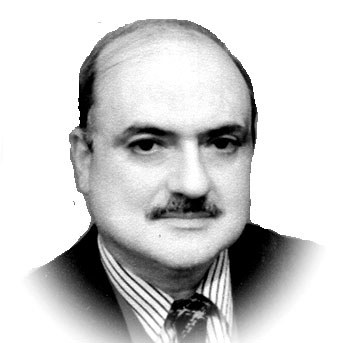Age as an attitude of mind !
IT is becoming something of a habit for our intelli gentsia to label this blessed country as ‘young’ – ‘young’ that is in terms of the proportion of young people inhabiting it and not in relation to when it came into being! Whether this demographic divide can or should be taken as an asset or a disability is beside the point.
What matters is how old age is to be categorized, if at all. And here too caution is called for since one is on thin ice! It happens to be one of the abiding quirks of human nature that a person – any person – never considers himself (or herself) as ‘old’.
Others yes, but when it comes to oneself, even the laws of nature have to take a back seat. The older one gets, the higher becomes the acceptable norm of what constitutes ‘old age’. To a teenager, for instance, a person of thirty or thereabouts is ‘old’.
To a thirty year old person, the acceptable image of ‘old’ hovers around fifty years! What it boils down to is: even the Goal Posts are not sacred in so far as this exercise goes.
What it all boils down to is the axiom that hardly anybody willingly accepts himself (or herself for that matter) as being ‘old’.
Others get ‘old’, but as for oneself, one ‘ages gracefully’ – and that is not quite the same thing, or is it? ‘Old’, thus always signifies a stage a few years ahead of the age the subject happens to have at that particular juncture. The definition of what constitutes old age, consequently, can never be precise. In terms of mathematics, it is a variable, not a constant.
The exercise happens to be entirely subjective; in a way, relative, never absolute. Looking at all aspects, it would be hazardous to pinpoint a precise answer to the question: how old is old? There are far too many variables to account for.
Still, taking all relevant factors into consideration, one can arrive at what can be called as the nearest approximation to the correct answer.
‘Old’, then, signifies an age approximately ten years older than that of the subject in question at that particular point in time.
Having come this far, one can now safely move on to the question ‘what is old?’ To reach a satisfactory conclusion, one falls back, as always, on the good old dictionary.
So here goes! The dictionary defines ‘old’ as ‘having lived a long time’ or ‘advanced in age; no longer young’. A fat lot of help these definitions are, especially when one’s aim is to achieve precision.
The dictionary does indicate, though, that ‘old’ happens to be a rather useful word in so far as English idioms go.
From ‘a chip off the old block’, through ‘old beyond one’s years’ and ‘old enough to know better’ to such gems as ‘old enough to be somebody’s father’, ‘old wives’ tale’ and ‘teaching an old dog new tricks’ there is a rather wide spectrum of idioms to choose from.
And, to take the edge off any rancor that anyone may be feeling due to advanced age, there is always the idiom ‘old is gold’ to fall back upon.
Giving the matter a subtle twist, the word ‘antique’ also evokes one’s interest. Collecting antiques has become the preferred hobby especially of the nouveaux riches.
This is as against those of the ‘old school’, who happen to be in possession of the said antiques through inheritance.
There is thus a tug of war of sorts between these two social classes – one clinging to tradition that has come its way by birth, and the other that tries to make a grab at its vestiges making use of its new-found wealth.
This brings us to the very pertinent question: how does one discern genuine ‘antiques’ as against those items that are merely ‘old’ or ‘ancient’? For a definition of what is ‘antique’, one falls back once again on the good old dictionary.
According to the dictionary, ‘antique describes an object which has survived from the past and is, therefore, valuable today’.
This definition is anything but precise, because one sees around oneself several objects that have regrettably survived from the past, but can only be classed as ‘junk’. Many such objects find their way into several so called ‘antique shops’, where unscrupulous dealers use them to make a pretty penny out of gullible ‘antique-hunters’.
In order to be considered as ‘antique’, therefore, the object in question should be not only old but also appealing to one’s taste and something of a rarity.
That knotty question having been thrashed out hopefully to the reader’s satisfaction, one can now safely hark back to the matter at hand if you will.
How old does one have to be to be definitely considered ‘old’? The correct answer is: It all depends on the liver! There is, of course, a pun on the word ‘liver’. ‘
Liver’ can refer to the individual in question. It could also indicate that to live well the individual needs a healthy ‘liver’. A person, then, need not be ‘old’, unless he or she is intent on assuming this state.
An individual is only as old as he, or she, feels. To cut a long story short, being old or otherwise is nothing but a state of mind.
A person may be ‘old’ at twenty years of age or, alternatively, ‘young’ at eighty years! ‘Old’, then should be considered as a relative term, not precise and never, never accurate! And that brings to mind the age old differentiation between ‘accuracy’ and ‘precision’.
One had better stop before one ties oneself up in knots. There must be a moral in this somewhere, if the perspicacious reader can discern one!
— The writer is a former Ambassador and former Assistant Secretary General of OIC.










